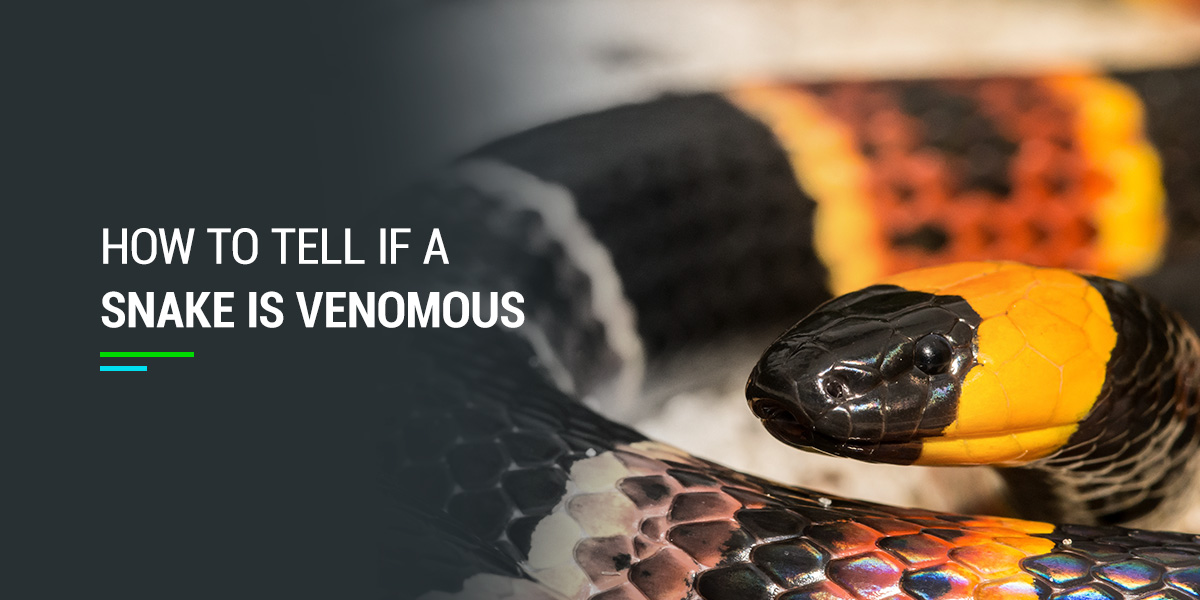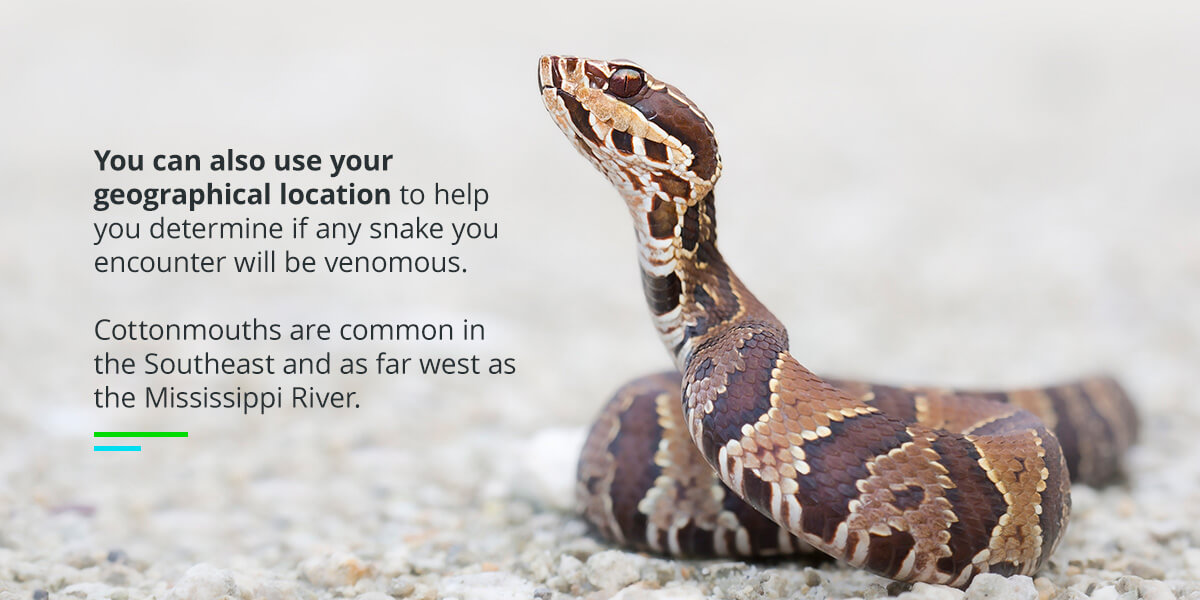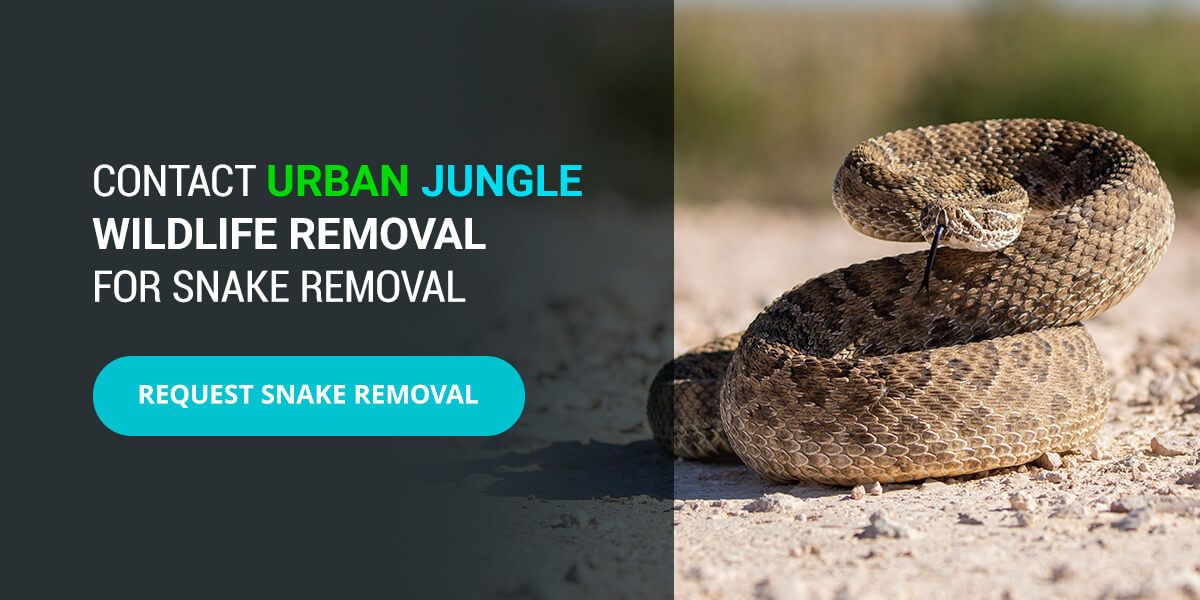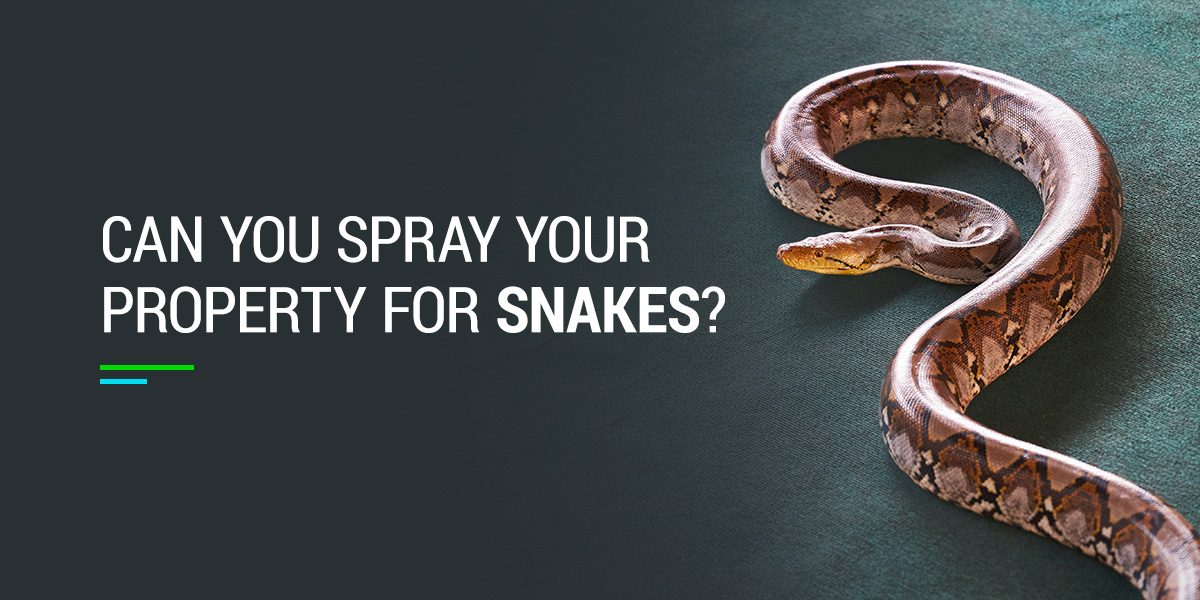
From coast to coast, venomous snakes live in diverse habitats throughout the United States. Though these snakes are usually solitary, they can sometimes creep onto your property or into your home, posing a significant hazard to you and your family.
Learning how to identify venomous snakes can help you keep your household safe. If you spot one of these dangerous animals, you can take the necessary steps to remove it from your property and call wildlife removal services for effective snake control to prevent them from returning.
What Does Venomous Mean?
Many animals produce venom, which they pass on to other living beings by biting or stinging. You might picture a snake when you think of venomous creatures since some of these animals release a toxin when they bite. However, most snakes are not toxic, so understanding the difference is critical if you ever encounter one in the wild.
Venomous vs. Poisonous
You may have heard people use the words “poisonous” and “venomous” interchangeably. However, they are not synonymous. Poison is a toxin that gets into the body by inhaling, swallowing, or absorption through the skin. Meanwhile, venom is a toxin that gets into the body via injection, typically through a bite or sting. Typically, when people are talking about snakes, they ask “Are snakes poisonous or venomous?” Keep in mind that a snake may use fangs to inject venom. By this definition, snakes are venomous, but not poisonous.
However, there is one possible exception to this rule. Garter snakes prey on creatures such as salamanders and newts, which are sometimes poisonous. A garter snake can store these poisons in its body. Still, it’s unlikely you’ll end up eating one or that a garter snake has accumulated enough poison from its diet to harm a human.
The primary concern people have with snakes is venom, though most snakes do carry any or enough to cause harm after a bite. The types of venomous snakes to look out for in the U.S. include the rattlesnake, copperhead, cottonmouth, and coral snake.
Typical Snake Behaviors
Behavioral indicators can help you determine what type of snake you’re dealing with. Different species of snakes will exhibit unique behaviors, so if you’re familiar with them, you can better identify what snake you’re around. Many snakes will give a warning to protect their home. For example, most people know rattlesnakes shake the rattles on their tails when they feel threatened. However, rattlesnakes may lose their rattles, which take time to regrow, so you can’t trust this method as a warning.
You can also use your geographical location to help you determine if you would encounter a venomous snake. Cottonmouths are common in the Southeast and as far west as Texas. Cottonmouth snakes live near water. If you live or travel around swamps, ponds, creeks, lakes, or other bodies of water, you can assume that a cottonmouth might be lurking nearby.
Familiarizing yourself with the venomous snakes in your area and where they live can help you prepare. You can use more caution when entering these areas and watch for snakes that could be venomous.
How to Tell if a Snake Is Venomous
Knowing how to identify a venomous snake can help you prevent a bite or identify a snake that has bitten you when receiving medical attention. These are some telltale signs for how to tell if a snake is venomous.
1. Head Shape
The head shape of most venomous snakes in North America makes them easier to identify. Generally, non-venomous snakes will have a round head shape, while a venomous snake’s head shape will be triangular. The exception to this is the coral snake, which being a cousin of the cobra, has a rounded head shape. Some non-venomous snakes may also mimic a venomous snake’s head shape by flattening their head to deter predators.
Many venomous snakes in the U.S. are pit vipers, including rattlesnakes, copperheads, and cottonmouths. These snakes have two holes on their heads that serve an essential function, allowing them to use infrared to detect their prey. Venomous snakes also have fangs.
While using head shapes or pits is a way to identify venomous snakes, spotting these features from a distance can be challenging. Rather than risking it by getting too close, you can always contact a professional for snake removal so you don’t accidentally get bitten. Even if the snake is dead, you should avoid getting too close, since it can still endanger your health and safety; there have been many documented incidents of venomous snakes biting long after they’re dead.
2. Coloring
Coloring is an easier way to identify snakes since you can usually do this from a safe distance. However, while there are only four types of pit vipers in the United States, each genus has several species and subspecies that vary in color and size. The color variations help these snakes camouflage within their environment to hide from predators and sneak up on their prey.
Still, coloration may not be a reliable way to determine whether a snake is venomous. Some non-venomous snakes have color patterns similar to venomous snakes, such as the scarlet king snake. If you’re ever in doubt, you should assume a snake is venomous so you don’t put yourself in harm’s way.
3. Pupils
In North America, most venomous snake species have distinct vertical pupils or slitted eyes, similar to a cat’s eye. Non-venomous snakes generally have rounded pupils instead. The exception to this is a coral snake, which also have rounded pupils. While this method is generally reliable for identifying a venomous snake, it can be one of the most dangerous options, since you need to get close to look at a snake’s pupils.
4. Exceptions
While the above identification methods can work for most snakes, there is an exception to the rule. The coral snake has features of a non-venomous snake, including a lack of pits and round eyes. Coral snakes also have the same red, black and yellow colors as other non-venomous snakes, including the milk or scarlet king snakes. However, it’s possible to distinguish these patterns.
Coral snakes will have a red color that touches yellow, while non-venomous snakes, like the scarlet king, will have red against black. You can also look for a black snout indicating a coral snake.
Contact Urban Jungle Wildlife Removal for Snake Removal
While there are some ways to tell if a snake is venomous, sometimes you must get too close to the snake, which could risk your safety. Instead, the experts at Urban Jungle Wildlife Removal can help. Our trained team traps and removes wildlife, including venomous snakes, throughout Texas.
Whether you see a snake in your home or lingering outside, we can safely remove it and prevent it from returning by eliminating food sources and using deterrents. We can also help you reinforce any entry points to prevent snakes from slithering into your home. You can request our snake removal services to get started!



